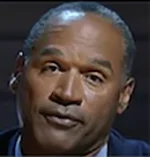 Ronn Torossian Ronn Torossian |
This month, Target’s corporate office announced the beloved retail brand was partnering with another time-tested name: Disney. The bullseye is aiming to have 65 Disney stores open inside select Targets, with 25 of the locations opening in October of this year. For those not living near a retail location, Target will also offer a dedicated online store for the partnership. While the move may seem a bit odd, there is more strategy behind the idea than it may initially appear.
Many bemoan the downfall of traditional brick and mortar retail. While this is absolutely true—consumers are increasingly difficult to coax off their mobile devices and out of their homes, now more than ever—some brands have managed to stay above water by thinking outside the box. The latest partnership for Target, which has dedicated much of its resources to marketing to Millennials, is a strategic move that factors in the staying power that Disney has.
Indeed, Disney has been a force to be reckoned with as far as branding is concerned. The brand remains timeless and classic, still operating retail stores and also launching its own streaming service, Disney+. Interestingly, Disney has also launched partnerships around its streaming service, too, offering customers Hulu as a part of its package.
What do these new partnerships signify? A shift in traditional retail, where it’s very much every man for himself. In order to stay alive in a consumer economy that’s moving closer to full e-commerce each day, these partnerships may just be key. Offering consumers convenience, as well as solid brand affiliations, will create more opportunities for sales than if the brands were to remain separate.
How does marketing play into this strategy? Creative marketers will jump at opportunities to do a partner promotion. Content plays strongly into this concept, particularly with strong, recognizable brands such as these. But what if the brands aren’t quite as well-known or flashy?
Partnerships in marketing aren’t a new concept, but we are beginning to see more and more of them. Marketing partner promotions requires some creative thinking. Presumably, the audiences for each brand will have some overlap but will also have some new demographics that need to be enticed. The marketing teams for each brand should work collaboratively so as to share information about their respective audiences and what has worked in the past to reach them.
And not every partnership makes sense. Brands must be able to complement each other, so finding strategic partnerships is also an important step. Target and Disney complement each other well because of the target audience (Millennials who grew up on Disney and the younger generation loves the newest Disney content), so try to model future partnerships off of this concept.
Determining KPIs, just as with any marketing campaign, will also be a part of the partnership process. Each brand may come to the table with its own objective, so it’s important to ensure that expectations are set and that marketing done on each side is conducive to these goals.
Working together with another brand can often be an injection of fresh air and creativity for any brand’s marketing. This partnership between Target and Disney is sure to be a unique success, and in the face of often dismal retail news, this can be a bright moment other brands might want to emulate.
***
Ronn Torossian is CEO of leading PR firm 5WPR.


 The techniques deployed by OJ Simpson's defense team in the 'trial of the century' served as a harbinger for those used by Donald Trump... People worry about the politicization of medical science just as much as they fret about another pandemic, according to Edelman Trust Barometer... Book bans aren't restricted to red states as deep blue Illinois, Connecticut and Maryland challenged at least 100 titles in 2023.
The techniques deployed by OJ Simpson's defense team in the 'trial of the century' served as a harbinger for those used by Donald Trump... People worry about the politicization of medical science just as much as they fret about another pandemic, according to Edelman Trust Barometer... Book bans aren't restricted to red states as deep blue Illinois, Connecticut and Maryland challenged at least 100 titles in 2023. The NBA, which promotes legalized gambling 24/7, seems more than hypocritical for banning player for placing bets... Diocese of Brooklyn promises to issue press release the next time one of its priests is charged with sexual abuse... Truth Social aspires to be one of Donald Trump's iconic American brands, just like Trump University or Trump Steaks or Trump Ice Cubes.
The NBA, which promotes legalized gambling 24/7, seems more than hypocritical for banning player for placing bets... Diocese of Brooklyn promises to issue press release the next time one of its priests is charged with sexual abuse... Truth Social aspires to be one of Donald Trump's iconic American brands, just like Trump University or Trump Steaks or Trump Ice Cubes. Publicis Groupe CEO Arthur Sadoun puts competition on notice... Macy's throws in the towel as it appoints two directors nominated by its unwanted suitor... The Profile in Wimpery Award goes to the Ford Presidential Foundation for stiffing American hero and former Wyoming Congresswoman Liz Cheney.
Publicis Groupe CEO Arthur Sadoun puts competition on notice... Macy's throws in the towel as it appoints two directors nominated by its unwanted suitor... The Profile in Wimpery Award goes to the Ford Presidential Foundation for stiffing American hero and former Wyoming Congresswoman Liz Cheney. JPMorgan Chase chief Jamie Dimon's "letter to shareholders" is a must-read for PR people and others interested in fixing America and living up to its potential... Get ready for the PPE shortage when the next pandemic hits... Nixing Netanyahu. Gaza carnage turns US opinion against Israel's prime minister.
JPMorgan Chase chief Jamie Dimon's "letter to shareholders" is a must-read for PR people and others interested in fixing America and living up to its potential... Get ready for the PPE shortage when the next pandemic hits... Nixing Netanyahu. Gaza carnage turns US opinion against Israel's prime minister. Trump Media & Technology Group sees Elon Musk's X as an option for those who want the free expression promised by Truth Social but without Donald Trump, owner of 57.3 percent of TMTG... Chalk one up for "anti-woke warrior" governor Greg Abbott as University of Texas lays off 60 DEI-related staffers... Five percent of Americans see the US as its own worst enemy, according to Gallup.
Trump Media & Technology Group sees Elon Musk's X as an option for those who want the free expression promised by Truth Social but without Donald Trump, owner of 57.3 percent of TMTG... Chalk one up for "anti-woke warrior" governor Greg Abbott as University of Texas lays off 60 DEI-related staffers... Five percent of Americans see the US as its own worst enemy, according to Gallup.


 Have a comment? Send it to
Have a comment? Send it to 
No comments have been submitted for this story yet.